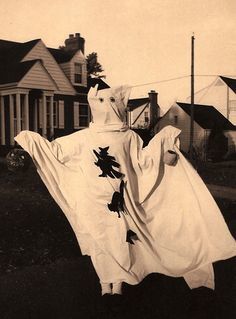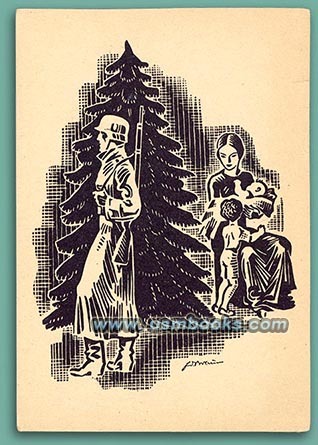Mark Scott Smith's Blog: Enemy in the Mirror, page 97
October 31, 2016
Halloween 1942
The Brian Sisters
Samhain, celebrated by ancient Celts on October 31st marked the beginning of the cold and bleak part of the year, often associated with death. The Catholic Church later transformed Samhain into a religious event known as All Hallows Eve (the evening before All Saints’ Day). Many European immigrants to America believed that wearing a mask on All Hallows Eve might prevent ghosts from recognizing them. And bowls of food were placed on doorsteps to satisfy ghosts that might otherwise enter a home.
The blending of European and Native American beliefs resulted in the uniquely American holiday of Halloween. The first American Halloween celebrations included public events created in honor of the harvest. By mid-19th century, the celebration involved spending the night with friends, dancing, singing, telling spooky stories and reading fortunes.

Trick-or-treating became popular in the 1920s. When sugar rationing began in WWII, trick-or-treating was no longer fashionable and town parades and parties (popular in the 1930s) were scaled back. Nevertheless, Halloween antics continued during WWII on the American home front.
With both mothers and fathers spending more time out of the home with war work, supervision of children and teenagers was often diminished. The result was widespread fear of juvenile delinquency, drug use and criminal behavior. Ordinary Halloween vandalism now seemed a more serious crime and the younger generation was thought to be out of control.
Many communities cancelled Halloween activities in 1942. But others sought to entice would-be delinquents off the streets with costume parties, dances, and other supervised activities – Halloween vandalism fell off in 1942, and after the war, neighborhoods trick-or-treating became the norm.
The post Halloween 1942 appeared first on Enemy in the Mirror.
October 27, 2016
日本の敗戦- Facing Defeat 1943

By the end of 1943, with no prospect of joining forces with its German allies who were being pushed out of Africa, and American forces penetrating its defensive ring, Imperial Japan was having great difficulty maintaining its distant holdings in the Western Pacific. The tide of the Pacific War had turned.
On the home front, the Japanese public received exaggerated reports of military successes and minimal information regarding defeats, initially leading them to believe they were winning the war. But by late 1943, when the army invented a new verb tenshin (to march elsewhere) instead of referring to retreat, most of the public were probably aware of the stark difference between propaganda and actual fact.
Although American and British films were banned, German and French films were still allowed with their love scenes edited out—love-making seen as an indulgence countering the spirit needed for war. In addition, some Japanese songs with suggestive lyrics were banned along with “enemy music,” including jazz. In 1944 baseball, electric guitars, the banjo and ukulele were banned.

As war news worsened, Japanese citizens were reminded that their nation had never lost a war and had sometimes won against great odds. Military leaders clung to the belief in Yamato damashii, Japanese raw courage, which in the end would overcome all Western technological and material advantages. In December 1943, Prime Minister Tojo described combat as a fight of the spirit of one side against the spirit of the other side. Guns were only advanced technology, he said. One could fight without them.
The post 日本の敗戦- Facing Defeat 1943 appeared first on Enemy in the Mirror.
October 24, 2016
Navajo Code Talkers
The U.S. deployed Cherokee and Choctaw Indians as code talkers during WWI. During WWII, other Native Americans, including Lakota, Meskwaki, and Comanche and Basque speakers, were also used.
A team of German anthropologists tried to learn Native American languages before the war, but the task proved too difficult. Nevertheless, aware of the German effort, the U.S. Army did not implement a large-scale code talker program in the European Theater of WWII.
In the Pacific Theater, however, Navajo code talkers were used extensively. Even among its closest Southwest relatives, the dialects and complex grammar of the unwritten Navajo language makes it virtually undecipherable to anyone without extensive exposure and training.
To conserve time, some military terms and concepts were given uniquely descriptive names in Navajo (e.g., “shark” referred to a destroyer). Code talkers memorized terms in a codebook that was never taken into the field (uninitiated Navajo speakers were unable to comprehend these messages).
Navajo code talkers continued to be deployed through the Korean and Vietnam Wars. Navajo code talking remains the only spoken military code that has never been deciphered.
The post Navajo Code Talkers appeared first on Enemy in the Mirror.
October 20, 2016
Home For Christmas 1943
Ironically, Bing Crosby’s elegant Toluca Lake mansion was virtually destroyed by fire. The culprit was none other than the family Christmas tree.
______________________

Want to hear the top hits of 1943? Check this out:
Jukebox 1943 (every major record hit)
The post Home For Christmas 1943 appeared first on Enemy in the Mirror.
October 17, 2016
War Bonds
In 1917 the U.S. government issued Liberty Bonds to raise money for its involvement in WWI. After the war, these bonds were sold as Baby bonds. In the summer of 1940, with Fascist gains in the European war, discrete preparations for possible U.S. involvement in the war were begun.
The US Treasury began marketing the previously successful baby bonds as Series E defense bonds. After the Japanese attack on Pearl Harbor on December 7, 1941, their name was changed to War Bonds.
The post War Bonds appeared first on Enemy in the Mirror.
October 13, 2016
Thai-Burma Railway
Built from October 1942 to October 1943 under horrific conditions by ~200 000 Asians laborers and >60 000 Allied POWs, the Thai Burma railway was over 400 kilometers long. Once completed, the Japanese planned to use it to attack the British in India, and roads and airfields used by the Allies to supply China over the Himalayan Mountains.
> 12 000 Allied prisoners (~2700 Australians), an estimated 75-100,000 coerced Asian laborers (Rõmusha) and 1000 Japanese died during the construction of the railway.
The terrible ordeal was depicted in the movie The Bridge over the River Kwai and many books including the recent winner of the Man Booker prize The Narrow Road to the Deep North by Richard Flanagan.
The post Thai-Burma Railway appeared first on Enemy in the Mirror.
October 10, 2016
Christmas at Leningrad – 1943

Christmas 1943
Poem written by an un-named German soldier, subsequently lost in the battle of Leningrad.
Irgendwo in Russland zünden
wir zur Nacht die Kerzen an.
Und so wird Euer Herz mich finden,
da ich nicht bei Euch sein kann.
Stumm und ungesprochen bleiben
alle Worte, die von mir
mit Sternen heimwärts treiben
in die Einsamkeit zu Euch.
Viele tausend Wünsche wandern
leuchtend durch die fromme Nacht,
wo ein Mensch um einen andern
sorgend liebt und denkt und wacht.
___________________________
Somewhere in Russia we light
the candles for the night.
And so will your heart find me,
because I can’t be with you.
Silent and unspoken
stay all my words
drifting homewards with the stars
through the solitude to you.
Many thousand wishes wander
glowing through the divine night,
where one human for another,
cares, loves and thinks and guards.
The post Christmas at Leningrad – 1943 appeared first on Enemy in the Mirror.
October 6, 2016
Tarawa – November 1943
Heart-breakingly ferocious, the Battle of Tarawa, the first American offensive
in the central Pacific region, reminds me of Walt Whitman’s Civil War poem:
__________
The moon gives you light,
And the bugles and the drums give you music,
And my heart,
O my soldiers, my veterans,
My heart gives you love.
___________

The post Tarawa – November 1943 appeared first on Enemy in the Mirror.
October 3, 2016
Nazis Rescue Mussolini – 1943
On July 24, 1943, following the Allied invasion of Sicily, the Italian fascist Prime Minister Benito Mussolini was arrested and a provisional Italian government, under Marshal Pietro Badoglio was established. Opposed to the alliance with Nazi Germany, Badoglio signed an armistice with the Allies.
With King Victor Emmanuel III and Marshal Badoglio in command, the Royal Italian Army entered the war on the side of the Allies. The Royal Army soon faced a crisis of leadership, however, and a swift German occupation of Italy and Italian positions in the Balkans resulted in >70,000 casualties within a few months.
After his release by the Germans in September 1943, Mussolini established the Republica Sociale Italiana, a puppet state of Germany in northern Italy that existed until the end of the war.
Adolf Hitler, concerned that the Allies would establish air bases in Italy that could threaten southern Germany and important oil supplies in Romania, ordered the deployment of 16 new divisions to the Italian mainland. The subsequent advance of the Allied Italian campaign was costly and prolonged. The last German forces in Italy surrendered in May 1945.
The post Nazis Rescue Mussolini – 1943 appeared first on Enemy in the Mirror.
September 29, 2016
Zippo Lighter
Zippo Lighter
Manufacture of the American Zippo lighter was inspired by the Austrian cigarette lighter made from spent ammunition shells by IMCO. The IMCO lighter was used by German troops throughout WWII.

IMCO lighter
The American Zippo Manufacturing Company produced their first lighter in 1933. After America’s entry into WWII, Zippo stopped production for the American consumer and dedicated all manufacturing to the U.S. military. Millions of American military personnel carried the lighter during WWII, establishing the Zippo lighter as an American icon throughout the world.
The post Zippo Lighter appeared first on Enemy in the Mirror.
Enemy in the Mirror
I began by posting events around the turn This website www.enemyinmirror.com explores the consciousness, diplomacy, emotion, prejudice and psychology of 20th Century America and her enemies in wartime.
I began by posting events around the turn of the 20th century as I was researching my first novel about the Pacific War. I continued through WWII for my second novel about the Battle of the Atlantic. Now I am beginning to look at the Cold War as I gather information for my next novel about the Korean War. ...more
- Mark Scott Smith's profile
- 7 followers



